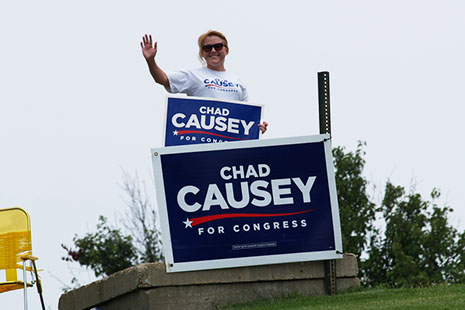PARTY membership has been in decline in liberal democracies for some time, and this trend is no more apparent than in Australia. The concern is not whether parties, like AFL clubs, can boast masses of staunch season-ticket holders. In the Facebook age, people everywhere are less inclined to bind themselves to the rules of organisations and prefer to opt in and out of causes fluidly, on the basis of individual issues.
The real concern is the unhinging of parties from their social bases, which has caused a drift of politics away from substantive debate. This trend is played out in the mirrored halls of knee-jerk reactions to opinion polls and media management. The major parties sense they are adrift without a compass.
Nonetheless the party system in Australia remains entrenched, lending politics a structural stability despite declining voter attachment. Think Labor, the Coalition and Greens, and think Woolworths, Coles and Aldi.
One answer to the dilemma would be to free up the party system by moving to proportional representation. For reasons of stability and self-interest, no established voice is calling for that. The ALP Review has instead called for a system of primary elections, which are North American in origin. In a system of primaries, any elector, and not just party members, can vote to select the candidates to face the general election.
Proponents argue that primaries will improve candidate pre-selection by opening the process to outsiders. Given the moribund nature of party branches and factionalism, this may increase voters’ sense that election results have legitimacy. And it might also enhance participatory democracy.
Advocating primary elections is not exactly new. The Nationals and Victorian Labor have trialled them, as have the British Tories. What the ALP Review has done is to lay out a model. The model is nothing like the public, US primary, though. In the United States, most primaries only involve outsiders. Anyone can register as a “Democrat” or a “Republican,” and in some states even “independents” can vote in either party’s primaries.
The US system is governed by state law: primary days are like mini election days. It was designed in the nineteenth century to weaken parties by curtailing the influence of “party bosses” (and later helped to limit racial discrimination by the monopolistic southern Democrats.)
By contrast, the Labor proposal would be run internally. It would not involve the spectre of the law, as in the United States, dictating how parties run their affairs. In that sense it would not be an imposition on freedom of association.
While local papers would take an interest, prospective candidacies would generally be low key. This would limit the likelihood of our replicating the prohibitively expensive American primary elections, which tilt the odds in favour of millionaires and carpet-baggers. Most of all, the Labor model would give only 20 per cent of the say to “registered supporters.” Sixty per cent would remain with paid-up members, and the remainder with union affiliates.
So Labor’s model would avoid features of the US system that are at variance with our traditions, such as the triumph of charismatic individuals over the party system and the expensive and lengthy razzamattaz. Of course, it does so at the expense of diluting the strength of the US system – its level of public participation. Electors in safe seats in Australia feel their vote is irrelevant and that factional hacks are gifted such seats. In the United States, electors decide whom each party is to nominate.
Registering as a Republican or Democrat is a public process. Under the Labor proposal it would be a private one, protecting people who do not want to broadcast their partisan sympathies. But this feature of the proposal presents a big problem. How can a party screen the “supporters” to whom it is giving a direct say in its affairs?
Activists in Australia have shown that they love playing dirty tricks on rival parties, including issuing fake party leaflets or stealing placards. Could Labor stop conservatives, who will wish to help preselect the least appealing candidate, from becoming involved?
Worse, stacking a primary election could prove even easier than stacking a branch. Branch memberships cost money and are subject to restrictions, such as waiting periods or limits on monthly recruitment. Something of value is given on both sides, with at least the expectation that the member is entering an ongoing relationship that is communal. Registering as a supporter would cost nothing and the supporter might never be seen.
The ALP review’s proposal is experimental rather than revolutionary. Its chief effect might be to stimulate sympathisers to register as supporters, creating a penumbra to which the party can reach out – just as movements like Get Up! draw on a wide but loose group of people who at root are just an email list.
But such privately run primaries would face significant practical hurdles in Australia. They are, at most, a second-best option for revivifying parties’ bases in the community. •




